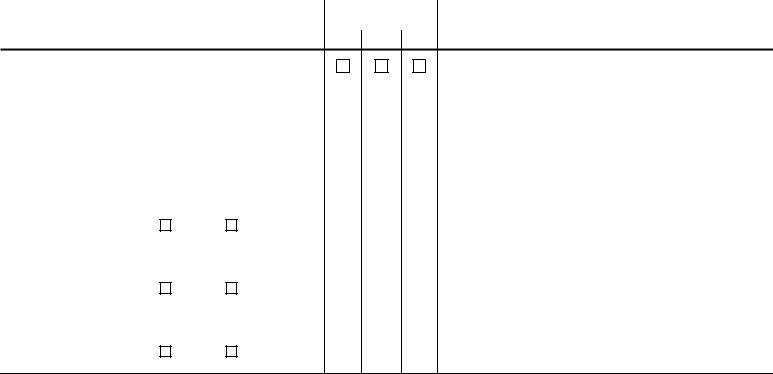Fulfilling the demands of modern healthcare and accessibility challenges, the F-62589 form plays a pivotal role in the certification and operational framework of TeleHealth services within the State of Wisconsin. This form, a product of the Department of Health Services' Division of Quality Assurance, is not just a procedural necessity but a comprehensive blueprint for mental health and substance abuse programs aiming to integrate TeleHealth. Its sections cover a wide array of critical considerations from agency certification, program specifics, personnel qualifications, to detailed program operation standards and training requirements. Importantly, the form emphasizes the need for TeleHealth to be fully aligned with the clinical and technical standards dictated by DHS subchapters, ensuring that services provided remotely maintain high-quality and efficacy. Application of the F-62589 ensures a meticulous vetting process for agencies aspiring to offer TeleHealth, mandating them to document their operational plans, clinical policies, staff qualifications, and technical capabilities. This rigorous standardization fosters a secure, effective, and accessible TeleHealth ecosystem, addressing specific patient needs while safeguarding their rights and privacy. Essentially, it maps out the pathway for agencies to extend their services through TeleHealth, advocating for greater access to mental health and substance abuse treatment across diverse settings.
| Question | Answer |
|---|---|
| Form Name | Form F 62589 |
| Form Length | 7 pages |
| Fillable? | No |
| Fillable fields | 0 |
| Avg. time to fill out | 1 min 45 sec |
| Other names | F62589 dhs f 62589 form |

DEPARTMENT OF HEALTH SERVICES |
STATE OF WISCONSIN |
Division of Quality Assurance |
|
|
REQUEST FOR APPROVAL TO USE TELEHEALTH
Completion of this form is optional.
Name - Agency |
Certification Number |
Date Application Completed |
|
|
|
|
|
Address - Agency (Street or P.O. Box) |
City |
State |
Zip Code |
|
|
|
|
Name - Person Completing This Form |
Telephone Number |
FAX Number |
|
|
|
|
|
Name - Agency Director |
Email Address - Person Completing This Form |
|
|
|
|
|
|
|
|
Office Use Only |
|
|
|
|
|
|
|
|
|
C |
NC NA |
COMMENTS |
(1) APPLICABILITY |
|
|
|
|
This request for approval applies only to mental health |
|
|
||
and substance abuse programs, currently certified or |
|
|
||
seeking certification under DHS subchapters, who are |
|
|
||
anticipating the use of TeleHealth as a means of service |
|
|
||
provision to increase access to services. |
|
|
|
|
a. The agency is currently certified under DHS |
|
|
|
|
subchapters for the provision of mental health and / or |
|
|
||
substance abuse services. |
|
|
|
|
Yes |
No |
|
|
|
b. If not certified, has the agency submitted an |
|
|
|
|
application for certification to DHS. |
|
|
|
|
Yes |
No |
|
|
|
|
|
|
|
|
(2) GENERAL |
|
|
|
|
Programs requesting to use interactive TeleHealth for clinical mental health and substance abuse services must be certified under DHS subchapter pertinent to their clinical specialty or facility.
The plan submitted in compliance with certification requirements for any service or facility must include provisions pertinent to the use of TeleHealth if the program is seeking certification including the use of TeleHealth.
The program / agency shall have in place a written document indicating how TeleHealth services are integrated into the overall plan for providing inpatient, outpatient, community support services, comprehensive community services, day treatment, and crisis mental health and substance abuse services.
The plan shall identify appropriate sites where consumers may access services (originating sites). These sites may include: hospitals, emergency care centers, outpatient clinics and mental health and substance abuse facilities, skilled nursing homes, schools, county Health and / or Human / Social Service offices, and other county offices

Page 2 |
||
|
Office Use Only |
|
|
|
|
|
C NC NA |
COMMENTS |
appropriate for private clinical evaluations and services.
The plan includes:
A description of how interactive TeleHealth services will be used in the overall strategy for mental health and substance abuse services.
Yes |
No |
How using interactive TeleHealth services will address the specific needs and strengths of consumers.
Yes |
No |
A description of services that can be provided via
TeleHealth services.
Yes |
No |
Criteria for selecting and identifying providers at the agencies to use TeleHealth services.
Yes |
No |
Criteria for selecting and identifying consumers appropriate for TeleHealth services.
Yes |
No |
A listing of appropriate originating sites.
Yes |
No |
The agency has a plan on file with DHS.
Yes |
No |
The plan includes specific references to the use of
TeleHealth.
Yes |
No |
(3) PERSONNEL
Only health personnel who are qualified under DHS subchapters may conduct appropriate mental health and substance abuse services via TeleHealth technologies (hereafter referred to as interactive TeleHealth services) for the purposes of diagnosis, treatment, and evaluation.
A regular staff member of the program must be available to present the consumer during clinical visits via TeleHealth unless another county public safety, public health, or Human / Social Service presenter trained in the use of TeleHealth is available.
Consultants, presenters, and any staff involved in interactions via TeleHealth with consumers present shall have training in the psychodynamics, legalities and patient rights pertaining to the use of TeleHealth technologies.
Persons providing consultations via TeleHealth are members of the agency and qualified under DHS

|
Page 3 |
|
|
Office Use Only |
|
|
|
|
|
|
|
C NC NA |
COMMENTS |
subchapters. |
|
|
|
|
|
|
Yes |
No |
|
All persons presenting during TeleHealth services are |
|
|||
adequately identified in the agency’s plan. These |
|
|||
persons are identified by position, not by name. |
|
|||
|
|
Yes |
No |
|
|
|
|||
(4) PROGRAM OPERATION AND CONTENT |
|
|||
TeleHealth technologies are used to provide access to |
|
|||
services as outlined in DHS subchapters in: |
|
|
||
a. |
Outpatient |
Yes |
No |
|
|
Crisis |
Yes |
No |
|
|
CCS |
Yes |
No |
|
|
CSP |
Yes |
No |
|
|
Day Treatment |
Yes |
No |
|
b. |
Services are available 24 hours / day. |
|
|
|
|
|
Yes |
No |
|
c. If services at the agency are required 24 hours / day |
|
|||
|
and not available via TeleHealth, are written |
|
||
|
guidelines available in the agencies plan for obtaining |
|
||
|
|
|
|
|
|
|
Yes |
No |
|
d. |
If access by interactive TeleHealth services is the |
|
||
|
primary method for providing outpatient, CSP, CCS, |
|
||
|
day treatment, or crisis mental health and substance |
|
||
|
abuse services, are trained staff available at all times |
|
||
|
for services? |
|
|
|
|
|
Yes |
No |
|
|
|
|
|
|
(5) |
ORIENTATION AND ONGOING |
|
|
|
|
TRAINING |
|
|
|
Each agency shall develop and maintain training in TeleHealth applications to include technology, clinical presentation, security and privacy, and documentation requirements specific to the clinical applications. Staff involved in service provision or presenting consumers shall receive training covering all the required components.
An orientation for staff using TeleHealth must include the following components in addition to any required clinically oriented mental health and substance abuse orientation:
Historical uses of TeleHealth
History of TeleHealth
Clinical Applications in TeleHealth
Telecommunications Technology
Technology
Codecs
Cameras
Consumer Peripherals
Transmission equipment
Audio equipment

|
Page 4 |
|
|
Office Use Only |
|
|
|
|
|
C |
NC NA |
COMMENTS |
Presenting Techniques |
|
|
|
Clinical services |
|
|
|
Safety and Security During Service Provision |
|
|
|
Privacy and Confidentiality |
|
|
|
Documentation |
|
|
|
Consumer Rights |
|
|
|
|
|
|
|
Patient Preparation for TeleHealth |
|
|
|
The required training elements are in place. |
|
|
|
Yes |
No |
|
|
At a minimum, annual inservicing is conducted regarding |
|
|
|
any changes or updates in TeleHealth applications |
|
|
|
including state legislative or regulatory changes. |
|
|
|
Yes |
No |
|
|
|
|
|
|
(6) CLINICAL POLICIES AND PROCEDURES |
|
|
|
Each program must have in place clinical policies and |
|
|
|
procedures that address the following operational |
|
|
|
components of conducting mental health and substance |
|
|
|
abuse services via TeleHealth: |
|
|
|
Preparation of Videoconference System and Cameras |
|
|
|
Purpose: To serve as a guide for setting up |
|
|
|
videoconferencing system and cameras for a TeleHealth |
|
|
|
visit. The intent of this guideline is to provide direction to |
|
|
|
the visit to improve efficiencies for the consumer, provider |
|
|
|
and the TeleHealth presenter. |
|
|
|
The Policy: |
|
|
|
Describes what is needed to prepare the room so |
|
|
|
everything is ready when the consult begins to avoid any |
|
|
|
technical problems. |
|
|
|
Yes |
No |
|
|
Describes the equipment needed and how it works.
Yes |
No |
TeleHealth Operations – Preparing for a TeleHealth
Consult
Purpose: To serve as a guide for obtaining and setting up equipment for any TeleHealth visit. The intent of this guideline is to provide direction to the visit in order to improve efficiencies for the consumer, provider and the TeleHealth presenter.
The Policy:
Describes the process for preparing charts and forms, room and equipment.
Yes |
No |
Describes what is needed to ensure the consumer chart and any other forms that may be needed for the consult, i.e. appoint forms, technology reports, prescription forms, etc. are available and accessible.

|
|
Page 5 |
|
|
|
Office Use Only |
|
|
|
|
|
|
|
C NC NA |
COMMENTS |
Yes |
No |
|
|
Details what is needed to prepare the room, positioning |
|
||
the chair, lighting that may be needed, privacy signage. |
|
||
Yes |
No |
|
|
Consumer Information, Security Policy
Purpose: To indicate the clinic respects and will protect every consumer’s right to have all information they share with health professionals kept confidential.
The Policy:
Explains the confidentiality policy.
Yes |
No |
Explains how technological problems are addressed before and during the TeleHealth consult.
Yes |
No |
Documentation During a TeleHealth Visit
Purpose: To serve as a guide for documentation during a TeleHealth visit. The intent of this guideline is to ensure compliance with documentation requirements for clinical consultations.
The Policy:
Documents TeleHealth consumer care in a medical record including prescriptions ordered.
Yes |
No |
Maintaining Technical Integrity During the Interactive
TeleHealth Consult
Purpose: The purpose of this guideline is to ensure that video and audio quality is maintained at a level sufficient for clinical care during interactive TeleHealth consultations.
The Policy:
Defined the staff and their roles and responsibilities including the role of the TeleHealth presenter.
Yes |
No |
Defined how to address technical failures.
Yes |
No |
Defined how to report failures. |
|
Yes |
No |
Conducting a TeleHealth Service
Purpose: To serve as a guide for conducting a TeleHealth service. The intent is to provide direction to the visit to improve efficiencies for the consumer, provider and the presenter (this could be a nurse clinician or other agency staff trained to assist the consumer with the TeleHealth consult).

Page 6 |
||
|
Office Use Only |
|
|
|
|
|
C NC NA |
COMMENTS |
The policy addresses:
Procedures for starting the consult Documentation of any meds ordered and the treatment provided
Reasons for the use of TeleHealth
An explanation of what occurs with new consumers, established consumers, charts, treatment plans, grievance policy, medication consents, etc. Medication consent procedures
Conducting the visit
Minimum Transmission Standards
Purpose: To establish the minimum standards acceptable for a
a.The program transmits services via proprietary lines.
Yes |
No |
b.The program transmits services at speeds equal to or higher than 256kbps.
Yes |
No |
c.If the program does not transmit services equal to or higher than 256kbps, what is the reason?
Economically not feasible and services would otherwise not be available
Transmission lines for higher speeds not available
Other – Specify:
(7) CONFIDENTIALITY
Maintenance, release, retention, and disposition of consumer service records are kept confidential as required under Chapter 51.30, Wis. Stats., HFS 92, where applicable 42 CFR Part 2, and federal HIPAA requirements.
Yes |
No |
(8) CONSUMER RIGHTS
All programs using interactive TeleHealth services shall comply with Chapter 51.61, Wis. Stats., and HFS 94, WAC, on the rights of consumers, and federal HIPAA requirements.
Consumers are given the choice of
Yes |
No |

Page 7 |
||
|
Office Use Only |
|
|
|
|
|
C NC NA |
COMMENTS |
(9) CONSUMER SATISFACTION
A satisfaction survey will be conducted for consumers and appropriate family members who use interactive TeleHealth services for access to mental health and substance abuse services. Recommendations include an internal report no less than quarterly and an annual report to the certification agency.
The agency / program has a satisfaction survey tool specific to interactive TeleHealth services.
Yes |
No |
The results are disseminated to provider, presenter and administrative staff.
Yes |
No |
There is evidence of program changes and improvements in response to satisfaction feedback.
Yes |
No |